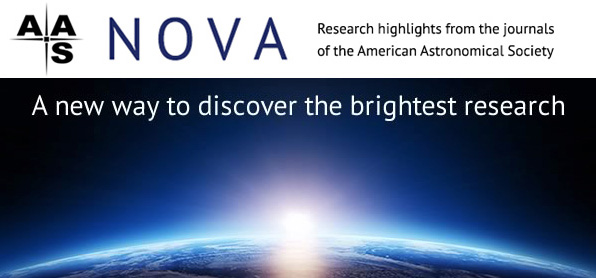Highlights from AAS Nova: 30 October - 12 November 2016

Susanna Kohler American Astronomical Society (AAS)
AAS Nova provides brief highlights of recently published articles from the AAS journals, i.e., The Astronomical Journal (AJ) and The Astrophysical Journal (ApJ), ApJ Letters, and ApJ Supplements. The website's intent is to gain broader exposure for AAS authors and to provide astronomy researchers and enthusiasts with summaries of recent, interesting research across a wide range of astronomical fields.
The following are the AAS Nova highlights from the past two weeks; follow the links to read more, or visit the AAS Nova webpage for more posts.
11 November 2016
Using LISA to Learn How Pairs of Black Holes Formed
How are black-hole binaries built? Upcoming observations of gravitational waves from these systems may be able to reveal their origins.
9 November 2016
Could Ultracool Dwarfs Have Sun-Like Activity?
Sun-like stars have magnetic cycles that regulate their flares, starspots, and other activity. But what about stars much cooler and smaller than the Sun?
8 November 2016
Modest Chaos in the Early Solar System
Astrobites reports on how our solar system may have evolved into the structure we see today.
7 November 2016
Featured Image: The Simulated Collapse of a Core
This stunning snapshot is from a complex computer simulation of a core-collapse supernova.
4 November 2016
2016 AAS WorldWide Telescope Competition
Want to share astronomy by making a tour, interactive experience, or video using WorldWide Telescope? You should — and then you should enter it in the first WorldWide Telescope Competition!
2 November 2016
A Pulsar and White Dwarf in an Unexpected Orbit
The eccentric orbit of a low-mass white dwarf around a millisecond pulsar defies expectations of how binaries like this form.
1 November 2016
A Long Time Ago Around a Star Far, Far Away…
Astrobites reports on one of the most distant planets ever discovered, at nearly 10,000 light-years away from Earth.
31 October 2016
Flying Through Dust From Asteroids
What if we could learn more about an asteroid near Earth without needing to land on it? We can — by flying through its dust!


